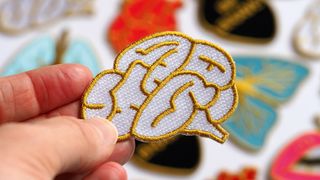Design literacy through legacy
We need to act now to preserve the legacies of our veteran artists and designers, says Steven Heller.
Three years ago, when a dozen veteran designers and illustrators turned 80 all around the same time, I wrote an article about how each and every one of them refused to even consider retiring.
The tenacious octogenarians included Seymour Chwast, Tomi Ungerer, Massimo Vignelli, Deborah Susman, Bob Gill, George Lois, RO Blechman, Tom Geismar (his partner Ivan Chermayeff turned 80 the following year) and earlier octogenarians, Milton Glaser, George Tscherny and Edward Sorel.
It is a damn impressive list of legacy makers. I hope that you have heard of at least half of the names above. But if these names and their accomplishments are unknown to you, then we have a serious literacy problem.
In this digital, screen-based age, the 'old-timers' have barely hit their fifties. But in the analogue design world each of the designers mentioned above have contributed prodigiously to the collective visual language of contemporary graphic design. Building on a mid-century Modern foundation, they defined the past four decades or more of design through their typography, imagery and visual thinking.
They impacted illustration, posters, advertising, wayfinding, packaging and identity (before it was branding). They laid the groundwork for the current generations, leaving legacies that fill graphic design archives, libraries and history books. Now, into their early to late 80s, they are still making work that impacts visual culture in general – and some of our personal lives too.
Generational passing
Yet each of them realizes all too vividly that mortality is closer at hand today than yesterday. Their time is limited and we must prepare. Death is inevitable, of course, but when the legacy-makers begin slipping away at regular intervals, as they have done recently, the reality of their legacies hit home like a meteor shower. This generational passing is a wave I'd rather not see. Yet it has begun.
In early May, Tony Palladino, age 84, became another of design's creative revolutionaries to pass away. Known for designing the original typography for the novel Psycho, which later was turned into the poster for the Alfred Hitchcock film, he was one of the clever conceptual thinkers who made what George Lois calls 'big idea' advertisements.
His age belies the fact that Palladino was active almost to the end, and nobody expected his demise this soon. A little over a week later, Massimo Vignelli, age 83, who had been seriously ill for a number of months, passed as well. His legacy of design breakthroughs were remembered in major publications, but his stature is rare.
As we brace ourselves for the inevitable, a big question looms: how will this 'octo-generation' be remembered and what histories from their individual and collective legacies will carry forth? The new generation of designers are continually altering the technology and media of the design landscape; will the accomplishments of the old guard mean as much to them as they did to the previous generation?
Are the venerable masters of type, illustration, wayfinding and advertising still relevant in this digital age? Or better asked, how can these designers' past innovations be made relevant for analogue and digital practitioners?
Practical suggestions
Here are some ways we can preserve their legacy. First, establish archives: the more the better. Online archives that enable immediate access to work are beneficial to us all. Institutions that cannot afford the high costs of physically archiving will benefit from the online alternative. Or, in the case of Massimo and Lella Vignelli, erecting a study centre that houses physical and virtual materials is a treasure. But short of a brick-and-mortar structure, websites for Paul Rand, Alvin Lustig, Saul Bass and Alan Fletcher are excellent models.
Curate retrospectives: exhibitions keep the public engaged in legacy and provide impetus for monographs, which lead to more online archiving. Placing the legacy-maker in context is the most important outcome next to keeping the legacy alive.
Make documentaries: recording the legacy-makers in interviews or as process videos increases the possibility that they will be appreciated during their lifetimes and after they've gone. Some of these films, including recent features on Tomi Ungerer, Milton Glaser, Herbert Matter and Massimo and Lela Vignelli have attracted sizeable audiences.
Every year, I ask my design history students to tell me what they know about key designers. Every year, their knowledge beyond the latest trend seems less. Legacy is essential not just to keep our heroes' spirits alive, but also to keep literacy alive. Legacy equals design literacy, the absence of which is hard to fill.
Words: Steven Heller
Steven Heller was an art director at the New York Times for 33 years. A prolific design writer, he currently lectures on the history of graphic design at the School of Visual Arts in New York. This article originally appeared in Computer Arts issue 229.

Thank you for reading 5 articles this month* Join now for unlimited access
Enjoy your first month for just £1 / $1 / €1
*Read 5 free articles per month without a subscription

Join now for unlimited access
Try first month for just £1 / $1 / €1
Get the Creative Bloq Newsletter
Daily design news, reviews, how-tos and more, as picked by the editors.
The Creative Bloq team is made up of a group of design fans, and has changed and evolved since Creative Bloq began back in 2012. The current website team consists of eight full-time members of staff: Editor Georgia Coggan, Deputy Editor Rosie Hilder, Ecommerce Editor Beren Neale, Senior News Editor Daniel Piper, Editor, Digital Art and 3D Ian Dean, Tech Reviews Editor Erlingur Einarsson and Ecommerce Writer Beth Nicholls and Staff Writer Natalie Fear, as well as a roster of freelancers from around the world. The 3D World and ImagineFX magazine teams also pitch in, ensuring that content from 3D World and ImagineFX is represented on Creative Bloq.




